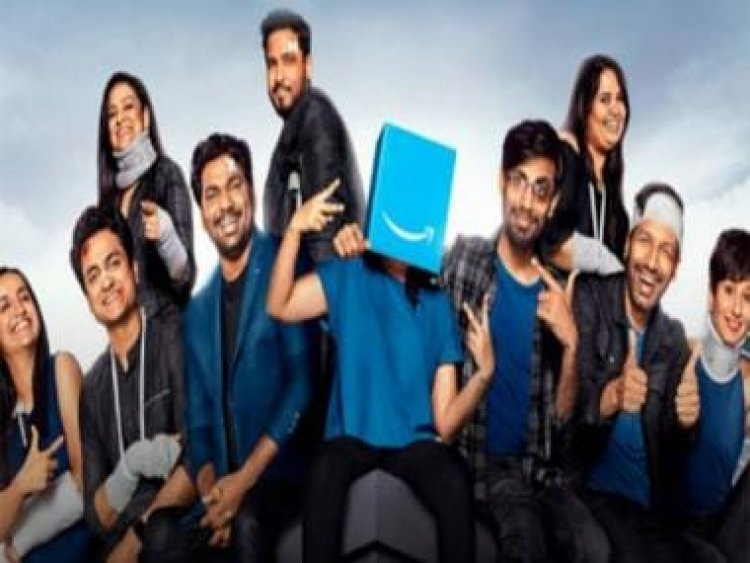Comicstaan season 3 reveals Indian reality TV at its best
Comicstaan season 3 reveals Indian reality TV at its best

Raju Srivastav inverted Kabir’s doha on ego elimination when he once joked in a candid interview on the All India Bakchod podcast, “Aise vaani boliye ki jam ke jhagda hoye/ par usse na boliye jo aapse tagda hoye.” Speak such words that fights are provoked, but never say them to one mightier than you, it roughly translates. The episode starts out with Tanmay Bhatt pointing out how the urban-English speaking crowd looked down upon Hindi comedians but the problem wasn’t the talent but that a lot of the humour on TV is low brow.
There is a long history of the link between Indian comedy and reality TV in India. An ethos built by the The Great Indian Laughter Challenge, sustained by Comedy Circus and contemporised by the various regional spin offs like Hasya Jatra and Tamil Comicstaan. However, none of them feel as egalitarian as the new Comicstaan. I have written before about how TV comedy in India serves to heighten condescension – the upper ceiling in TV that is hardly invisible; only certain categories of people become the butt of jokes. Comicstaan season 3 fronts as its radical opposite. Maybe it’s the glaring absence of Bhatt offering commentary like, "You’re so weird ya! I love it"; the new season also features the presence of more experienced contestants, leaving a blurry margin of error and greater avenues for collegiate respect, but there’s something all the more wholesome about this season.
There’s a post-pandemic and post-Me Too deflation to Comicstaan season 3. The comics were always self aware for a joke but in the new season you see Kenny confess, “Beyond a point we all kinda start sounding like each other.” Obviously, no other desi comedy show might have survived an insult comedy round. The lowest hanging fruits were up for grabs: fat jokes and fan bases, the strangest imagery vocalised and called back to ‘so and so looks like so and so’s reflection on a spoon.’ But the judges not only laughed in approval but shared tips on how to roast better. The judges and mentors are come-hither-and-sit with-us nice. They exude an uncommon camaraderie in a genre that is otherwise populated by insecure B-list celebrities that have never attempted stand up. Anu Menon is a proud mummy, Abish and Kenny are endlessly self-deprecating as if one wasn’t on a Forbes 30 under 30 list and the other the subject of a high school question paper. There are no irrelevant vox pops by bigger stars complimenting their fellow celebrities. Instead there’s a canny hype contest. For instance, when judge Sumukhi Suresh dips into her own childhood to explain why Menon isn’t your average snobbish Stella Maris student.
The judges, though popular targets of the roast, never swipe the chance to become roast masters themselves. This would have been irresistible to a star like Akshay Kumar, who in 2017 deigned to judge the return of The Great Indian Laughter Challenge. He said, laugh if you feel like it, because this is a show where no judge might force pageantry. He said, “We want to do a real show here,” all the while the show cuts to either Mallika Dua’s unnatural smile, Husain Dalal tipping over or the clapter an egged-on audience. One remembers Kumar’s trollish glee when he told Kapil Sharma on his own show, “Mujhe baar baar aake teri beizzati karni hai" [I want to keep visiting the show to insult you]. Kumar’s fascination with TV and comedy betrays his own understanding of either genre as a way to convert its consumers from bland acquiescence to malleable naifs. He operates like a traditionalist who thinks comics need to be taught a lesson and the public needs to be edified, with the hammer of his own opening set and the forge of TV.
It’s true that the two genres are always chasing a specific reaction, the difference is in how most of our comedy shows get there. Indian comedy on the internet versus the cable hides the strings of production. In season 3 of Comicstaan, the overt emphasis on winning is casual rather than inconvertible and naturalised. There is none of the ubiquitous reality drama, being on the show for the “right reasons” is not the prize money but the network. The comics are overtly inviting of social and parasocial relationships and the contestants are “there to make friends.”
Like a wrestling match, reality shows are rife with kayfabe or the convention of presenting staged performances as genuine and authentic. What is this behaviour, Pooja? It’s an admixture of scripted lines and real events, an agenda to stay on and win the grand prize; a socially acceptable thought experiment. But what is the persona on TV comedy? Is it the character portrayed by the contestant or the contestant themselves, desperate to belong to the show socially? In a 2019 article, TV comedy industry veterans tried to put their finger on what led to the disappearance of stand up comedy on TV. Subject censorship, mass appeal, lack of talent were touted, but not inauthenticity, which is the kiss of death for comedy and reality TV.
Eisha Nair is an independent writer-illustrator based in Mumbai. She has written on history, art, culture, education, and film for various publications. When not pursuing call to cultural critique, she is busy drawing comics.
Read all the Latest News, Trending News, Cricket News, Bollywood News, India News and Entertainment News here. Follow us on Facebook, Twitter and Instagram.
What's Your Reaction?




























































